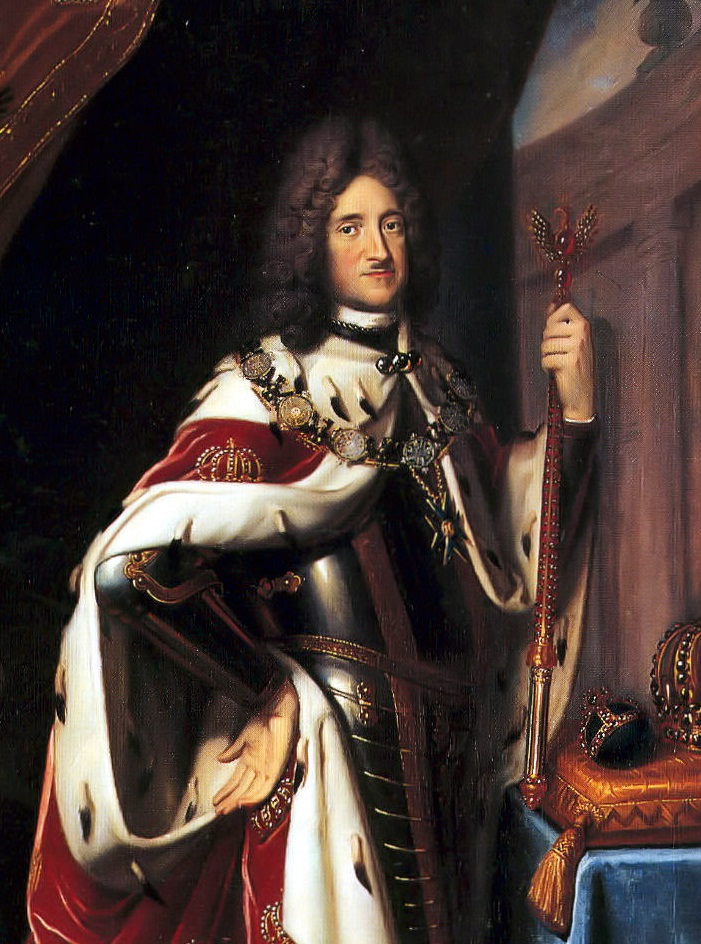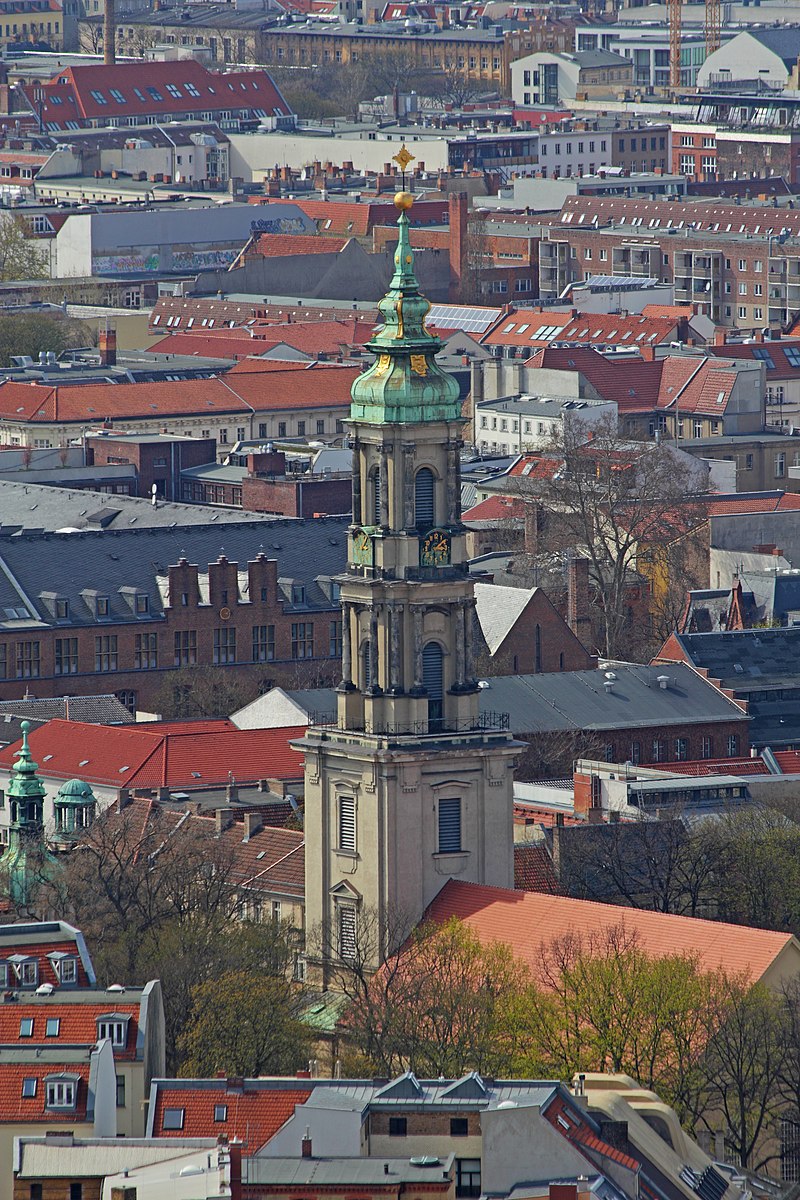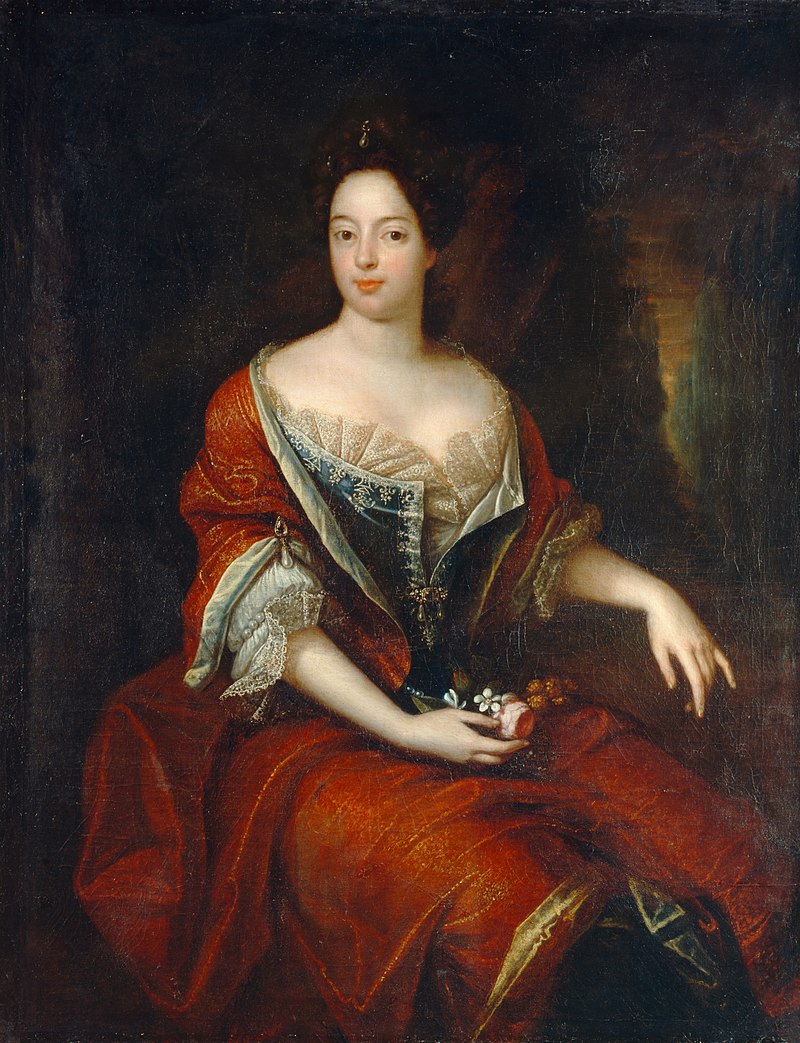by Scott Mehl © Unofficial Royalty 2019

Sophie Luise of Mecklenburg-Schwerin, Queen in Prussia; Credit – Wikipedia
Sophie Luise of Mecklenburg-Schwerin was the third wife of Friedrich I, King in Prussia. She was born at Grabow Castle in Grabow, Duchy of Mecklenburg-Schwerin, now in the German state of Mecklenburg-Vorpommern on May 6, 1685, the only daughter of Friedrich, Duke of Mecklenburg-Grabow and Christine Wilhelmine of Hesse-Homburg. Sophie Luise had three older brothers:
- Friedrich Wilhelm I, Duke of Mecklenburg-Schwerin (1675-1713) – married Sophie Charlotte of Hesse-Kassel, no issue
- Karl Leopold, Duke of Mecklenburg-Schwerin (1678-1747) – married (1) Sophie Hedwig of Nassau-Dietz, no issue; (2) Christine von Lepel, no issue; (3) Grand Duchess Catherine Ivanovna of Russia, had issue
- Christian Ludwig II, Duke of Mecklenburg-Schwerin (1683-1756) – married Duchess Gustave Caroline of Mecklenburg-Strelitz, had issue

Friedrich I, King in Prussia. source: Wikipedia
In Berlin on November 28, 1708, Sophie Luise married Friedrich I, King in Prussia, as his third wife. The couple had no children. Being so much younger than her husband, and close in age to his children, Sophie struggled to find acceptance at the Prussian court. It did not help that her predecessor Sophie Charlotte of Hanover was greatly loved and admired by the Prussian people, and many saw Sophie Luise as a poor replacement. The King surrounded her with courtiers who did not serve her best interests, and she avoided them as best she could, instead of spending most of her time with the lady-in-waiting who had accompanied her from Mecklenburg.
Over time, Sophie Luise became deeply religious, spending the majority of her time in prayer and listening to sermons, and often avoiding her duties as Queen Consort. As time progressed, her devotion became almost obsessive and manic. This caused distance between her and her husband, particularly because of her overzealous attempts to get him to convert from Calvinism to Lutheranism. This led to her husband Friedrich removing her closest confidantes and courtiers, and soon Sophie Luise became even more deeply entrenched in what is described as her obsession with religion, resulting in depression and mental derangement.
Friedrich was mostly unaware of Sophie Luise’s mental decline, until several months before his own death. Deeply ill, he awoke to find his wife standing before him, covered in blood and screaming at him. She had crashed through a glass door while running from her apartments to his, apparently to confront him in a fit of hysteria. Sophie Luise had no recollection of the event afterward, and Friedrich soon sent her back to Mecklenburg to be with her family. He would die just months later in 1713.
Sophie Luise, Queen in Prussia, lived the rest of her life with her widowed mother and died on July 29, 1735, at Schwerin Castle in Mecklenburg, Duchy of Mecklenburg-Schwerin, now in the German state of Mecklenburg-Vorpommern. She is buried in the Schelfkirche St. Nikolai in Schwerin.

Sophienkirche, Berlin. photo: By A.Savin (Wikimedia Commons · WikiPhotoSpace) – Own work, CC BY-SA 3.0, https://commons.wikimedia.org/w/index.php?curid=25766110
The Sophienkirche in Berlin is named for Sophie Luise. Construction began during the reign of her husband Friedrich I, but he died just months before it was completed in 1713. His successor Friedrich Wilhelm I, the son of his second wife Sophie Charlotte of Hanover, refused to name the church after his stepmother Sophie Luise as had been intended, consecrating it as the Spandauischekirche (Spandau Church). Later, when Friedrich Wilhelm I’s son Friedrich II (the Great) came to the throne, he renamed it the Sophienkirche (Sophie Church), which remains the name to this day.
This article is the intellectual property of Unofficial Royalty and is NOT TO BE COPIED, EDITED, OR POSTED IN ANY FORM ON ANOTHER WEBSITE under any circumstances. It is permissible to use a link that directs to Unofficial Royalty.
Prussia Resources at Unofficial Royalty



















